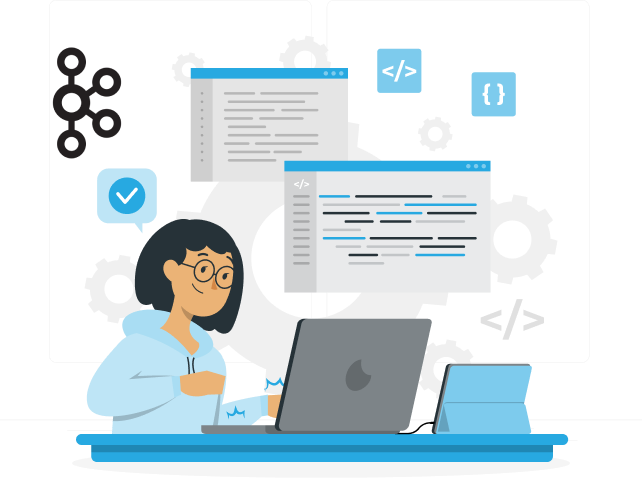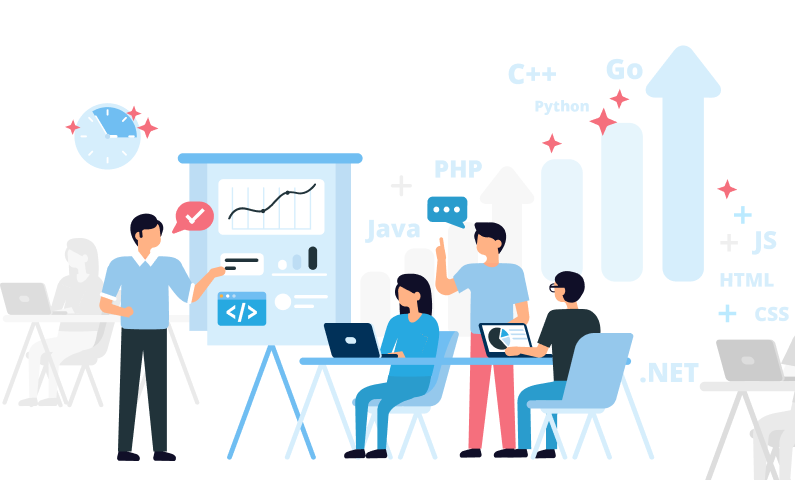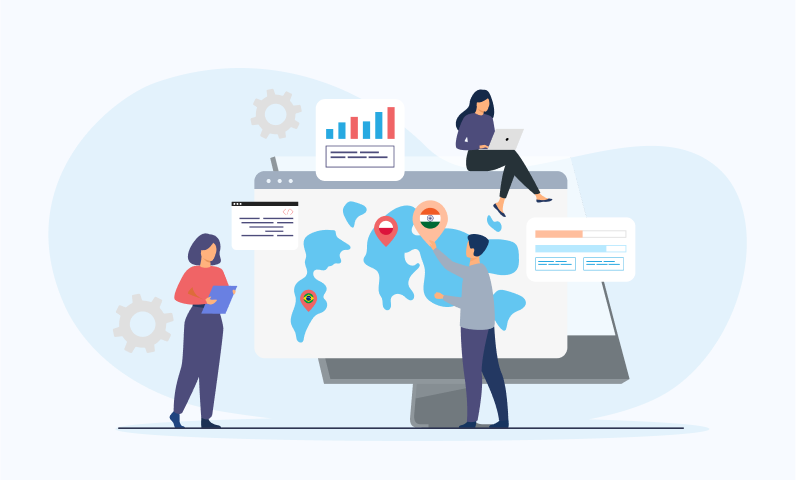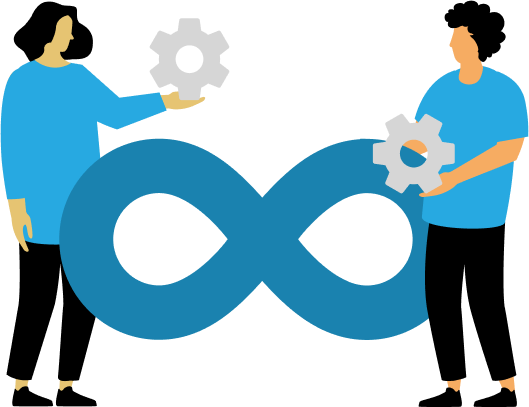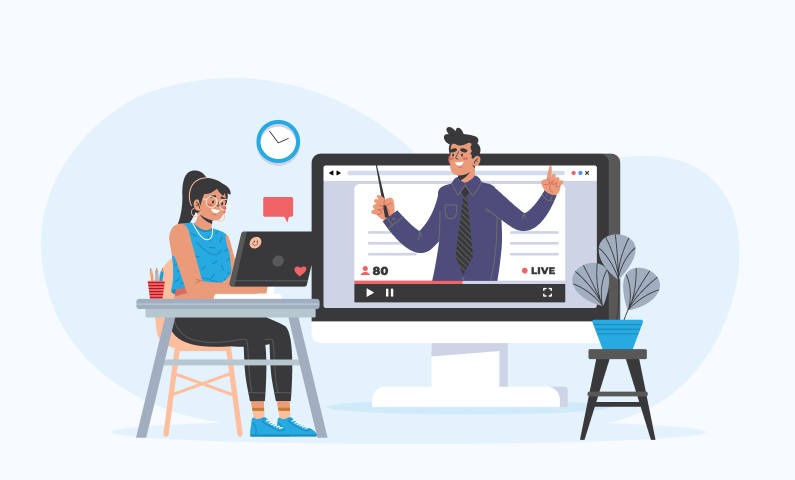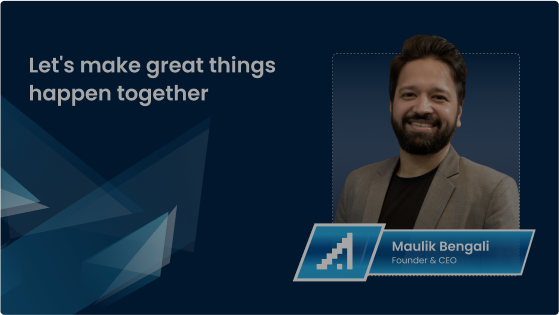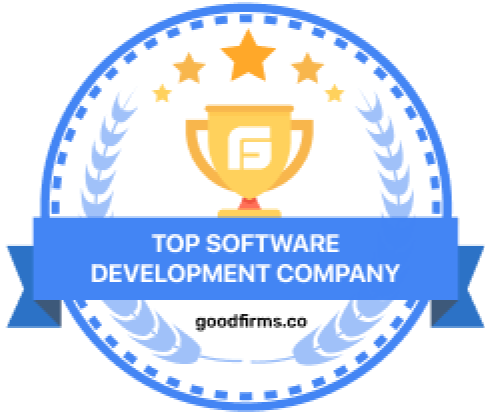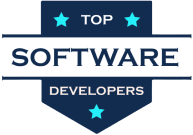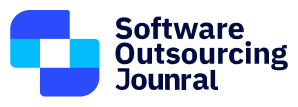Flutter has become one of the most popular frameworks for cross-platform app development, allowing developers to build natively compiled mobile, web, and desktop applications from a single codebase. With its growing adoption, the demand for skilled Flutter developers has skyrocketed. Whether you’re a beginner or an experienced Flutter app developer, mastering key skills is crucial to staying competitive in the job market.
We will discuss 20 must-haves of Flutter developers. They range from core principles of Flutter development all the way to more complex techniques such as performance optimization and state management in this blog.
20 Must-Have Skills for Flutter Developers to Master in 2025
1. Good Dart Programming Language Understanding
Dart is the base of Flutter app development, and every Flutter developer should be well-versed in its syntax, features, and best practices. The language is object-oriented, with support for asynchronous programming, optional typing, and null safety, which makes Dart suitable for scalable applications.
Key Concepts to Learn about in Dart:
- Variables & Data Types – Understand how Dart manages primitive types, collections, and advanced structures.
- Functions & Methods – Named and anonymous functions, function expressions, and higher-order functions.
- Object-Oriented Programming (OOP) – Classes, objects, constructors, and inheritance are the backbone of structuring Flutter applications.
- Asynchronous Programming – Working with Future and Stream makes it easier to handle async tasks like API calls.
- Null Safety – Since Dart 2.12, null safety has become a must for preventing runtime errors in Flutter app development.
2. Mastery of Flutter Framework and Widgets
Widgets are the building blocks of Flutter applications. To become a successful Flutter developer, you must master Flutter widgets, their lifecycle, and how to structure them efficiently.
Key Flutter Widgets:
- Stateless & Stateful Widgets – Know the difference and when to use each.
- Material & Cupertino Widgets – For designing apps on Android and iOS with platform-specific UI elements.
- Layout Widgets – Such as Row, Column, Stack, Container, and Expanded.
- Navigation & Routing – Using Navigator and named routes for smooth navigation.
- Forms & User Input Handling – Widgets like TextField, Form, and DropdownButton for handling the user interactions.
Example Use Case:
A Flutter app developer working on a fintech app needs to make sure that the UI components are responsive and intuitive across all sizes of screens. It can be achieved using widgets like Flex and MediaQuery to build dynamic, adaptive layouts.
3. Familiarity with State Management Techniques
State management is one of the most vital aspects of Flutter development. The performance, maintainability, and scalability of a Flutter application totally depend upon how efficiently the states are managed within it.
Popular State Management Approaches:
- Provider – Officially recommended by Flutter, it makes state management simple with dependency injection.
- Riverpod – A more modern alternative to Provider, providing better testability and reactivity.
- Bloc (Business Logic Component) – Makes use of Streams to manage the state efficiently. Suitable for large applications.
- GetX – A light and easy state management package that enhances dependency injection.
Example Use Case:
An e-commerce app made using Flutter by a mobile application development company uses Bloc for cart states so that any products added to the cart persist even in case of change between pages.
4. API Integration and Networking
Most modern apps depend on APIs to fetch data from servers based at remote locations. A Flutter developer must know how to integrate a RESTful API and handle networking calls.
Important API Integration Skills:
- Using the http Package – The go-to package for making GET, POST, PUT, and DELETE requests.
- JSON Parsing & Serialization – Handling JSON responses efficiently using jsonDecode and jsonEncode.
- Dio Library – A powerful HTTP client with features like interceptors and request cancellation.
- Error Handling & Caching – Managing failures and optimizing performance with caching techniques like Hive or SharedPreferences.
Example Use Case:
A Flutter mobile application that fetches weather data from an API needs efficient error handling to manage network failures gracefully and display suitable error messages.
5. Database and Local Storage Management
A Flutter developer should know about all the cloud-based and local databases for effective management of app data.
Popular Database Solutions in Flutter:
- SQLite: For structured, offline data storage
- Hive: It is a fast NoSQL database, well optimized for Flutter Apps.
- Firebase Firestore: A real-time cloud database for handling large-scale applications.
- Drift (moor): A reactive persistence library that simplifies SQL operations in Flutter development.
Example Use Case:
A Flutter full-stack developer creating a social media app uses Firestore to store user posts in real time while leveraging Hive for offline caching.
6. Knowledge of Flutter Web Development
With Flutter now supporting web applications, a Flutter web developer should be aware of how to optimize performance for different screen sizes and browsers.
Important Skills for Flutter Web Development:
- Responsive UI Design–Implementation of layouts that respond at run time using MediaQuery and LayoutBuilder.
- Performance Optimization–Reducing asset sizes, lazy loading images, and optimization for code execution.
- SEO Best Practices – Handling meta tags and optimizing content for search engines.
- Service Workers & PWA – Improving offline support by service workers and making Flutter web apps a PWA.
7. Cross-Platform Mobile Application Development
A Flutter developer of cross-platform mobile app should have the ability to ensure that his app runs properly on both Android and iOS.
Key Skills in Cross-Platform Development:
- Handling Platform-Specific Code – Using MethodChannel as a way of accessing native Android (Kotlin/Java) or native iOS (Swift) code.
- Adapting UI for different devices – how to make UI elements adapt automatically for different screen sizes and resolutions.
- Device Permissions – how to manage permissions such as location, camera, or file access
Example Use Case:
A Flutter mobile application for banking uses different biometric authentications on Android (BiometricPrompt) vs. iOS (LocalAuthentication)
8. Version Control and CI/CD
Every Flutter developer should be proficient in using Git and implementing CI/CD pipelines.
Key Git and CI/CD Concepts:
- Branching & Merging – Using Git efficiently for collaborative development.
- Automated Testing – Running unit and integration tests using CI/CD pipelines.
- Deployment Automation – Setting up pipelines for Play Store, App Store, and web releases.
9. UI/UX Design Principles
A visually appealing app enhances user experience and engagement. A Flutter developer should understand UI/UX best practices to create an intuitive and responsive app design.
Key UI/UX Concepts for Flutter Developers:
- Material & Cupertino Design Guidelines – Ensure that apps follow platform-specific design principles.
- Animation & Transitions – Implementing smooth animations using Hero, AnimatedContainer, and Rive.
- User Accessibility – Ensuring that apps are accessible to users with disabilities.
10. Knowledge of Integrating Third-Party Libraries
As a Flutter application developer, there will be multiple occasions when third-party libraries must be integrated for further extension in applications. You may need this to add a new feature to your application or improve its performance. So, working with libraries is very crucial.
Some examples of popular libraries:
- FlutterFire: This integrates Firebase services in Flutter applications.
- image_picker: It is a library that provides functionality to choose images from a device gallery or camera.
- flutter_local_notifications: It is for local notifications within mobile applications.
- get_it – A lightweight service locator for dependency injection.
Example Use Case:
A Flutter app development company uses FlutterFire to handle authentication and cloud storage, allowing users to log in with their Google accounts and upload images to Firebase Storage.
11. Testing and Debugging
Testing and debugging is one of the most essential skills for every Flutter developer in ensuring the quality of their apps. Effective writing of test cases, running unit and widget tests, and making use of the debugging tools would create a completely bug-free app.
Key Testing Skills:
- Unit Testing – Isolated functions tests can be written with the use of packages such as test.
- Widget Testing – UI components test using the flutter_test package.
- Integration Testing – Replication of user interactions to test the entire app flow.
- Debugging – Utilization of Flutter DevTools and logging to identify and resolve issues.
Example Use Case:
A Flutter developer working on an e-commerce application writes unit tests for the checkout procedure to ensure that the tax, discount, and total calculations are accurate before release.
12. Knowledge of Firebase and Backend Integration
Firebase is one of the most frequently used BaaS solutions for development in Flutter Mobile Apps. To be a decent Flutter developer, one must integrate Firebase services – authentication, databases, and Cloud Functions.
Recommended Firebase Services:
- Firebase Authentication-A user’s registration, login and authentication process
- Firebase Firestore– Store and syncing app data.
- Firebase Cloud Messaging– Send to users through messaging.
- Firebase Analytics– Tracking every app usage from the user-end.
13. Awareness of Cloud Services in Flutter Development
For back-end solutions, cloud services such as AWS, Google Cloud, and Azure are great options. With the growing importance of cloud computing, including serverless architecture and cloud storage, it is essential to know how to use them.
Important Cloud Skills in Flutter Development:
- Serverless Computing– Use AWS Lambda or Google Cloud Function for the back-end processing.
- Cloud Storage – Integration of solutions like Firebase Storage or AWS S3 for managing user files.
- Scaling Apps – All necessary backend scaling so that when the number of users increases, the app scales accordingly.
14. Continuous Learning and Keeping Up with Flutter Updates
Flutter is an ever-changing framework with new updates and releases happening frequently. It is primarily very important for any Flutter developer to stay updated with the latest releases, packages, and best practices.
How to Keep Yourself Updated:
- Follow the Flutter GitHub Repository – Track the official repo for updates and releases.
- Join Flutter Communities – Engage with online communities like Reddit, Stack Overflow, and Flutter Dev Google Group.
- Attend Conferences & Webinars – Participate in Flutter-related conferences like Flutter Interact to learn from industry experts.
15. Strong Understanding of Performance Optimization
Performance is the prime requirement for the success of any mobile application. Flutter app developers should know how to optimize their code, minimize memory usage, and improve overall responsiveness in applications.
Performance Optimization Techniques:
- Widgets are used very efficiently – avoiding unnecessary rebuilds of widgets with const constructors.
- Lazy Loading: Only load what is necessary so that initial loading time is less.
- Reduce the size of your app: reduce the size of assets, code, and dependencies.
- Profiling and Monitoring – Use Flutter DevTools to profile your app’s performance.
16. Mobile App Security Best Practices
Security is one of the most critical aspects of Flutter app development. Developers must ensure that the data and interactions within their app are secure.
Mobile App Security Essentials:
- Secure Storage – Store sensitive data securely using packages like flutter_secure_storage.
- Encryption – Encrypt data before sending it over the network.
- App Permissions – Get the App asking only relevant permissions and deal with permissions wisely
17. Knowledge of Deployment Processes of Applications
Deploying a Flutter application to the play store, App Store, or web, is an important skill a Flutter developer should possess. It requires full knowledge of the deployment process itself – versioning, signing, and uploading applications.
Key Deployment Skills:
- Versioning of Applications – version increases and changelogs management.
- App Store Guidelines – Know the submission guidelines for iOS and Android stores.
- Continuous Deployment (CD) – Automating the deployment process using CI/CD tools.
18. Knowledge of Agile Methodology
Many Flutter app development companies work in Agile environments, where sprints, user stories, and continuous feedback drive development. Having experience working in Agile teams can be a big advantage.
Key Agile Concepts:
- Scrum & Kanban – Familiarity with frameworks like Scrum or Kanban for iterative development.
- Sprint Planning – Breaking tasks into manageable chunks and estimating completion time.
- Collaboration & Communication – Regularly interacting with team members and stakeholders.
19. Mobile App Design Patterns
Design patterns are reusable solutions to common software design problems. A Flutter developer, by understanding MVC (Model-View-Controller), MVVM (Model-View-ViewModel), and Singleton, can create better-structured and maintainable code.
20. Good Problem-Solving and Debugging Skills
Finally, every Flutter developer should possess great problem-solving and debugging skills. It might be bug fixing, optimizing performance, or deployment-related issues. It is crucial to be able to handle problems in the most efficient manner.
Conclusion
Mastering these 20 must-have skills will make you one of the well-rounded Flutter developers, capable of building high-performance mobile, web, and desktop applications. Whether you are looking to hire Flutter developers or become one yourself, staying updated with the latest Flutter development trends and best practices is essential.
If you are an enterprise looking for Flutter app development services, then partnering with an experienced Flutter app development company like us for high-quality and scalable solutions. Let’s speak.

Start a Project with Ajackus



































